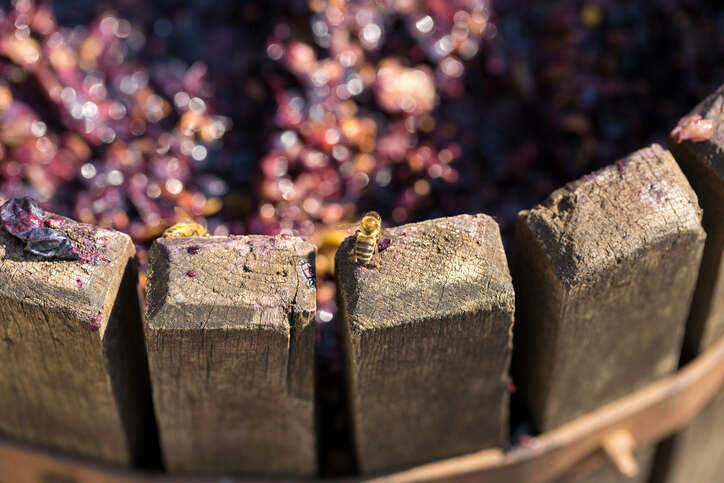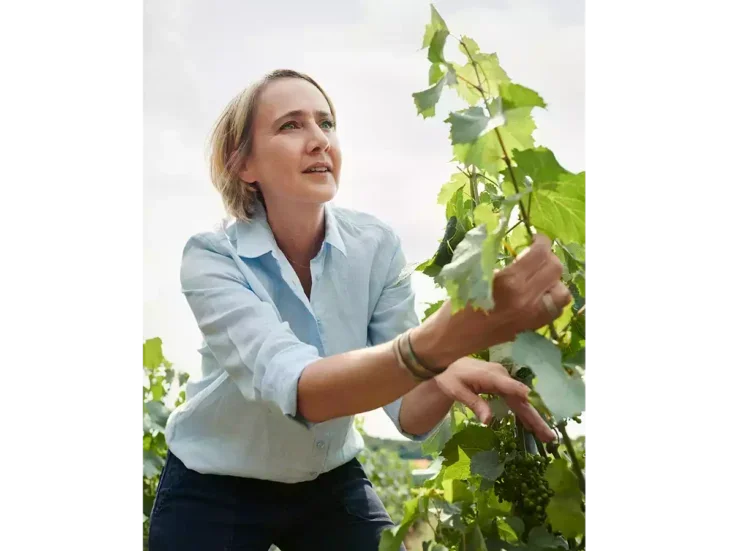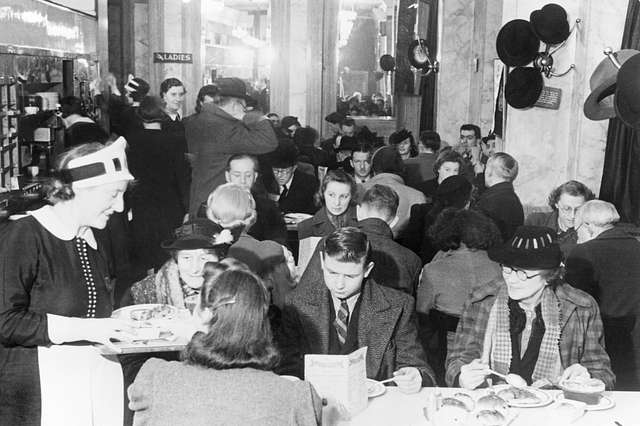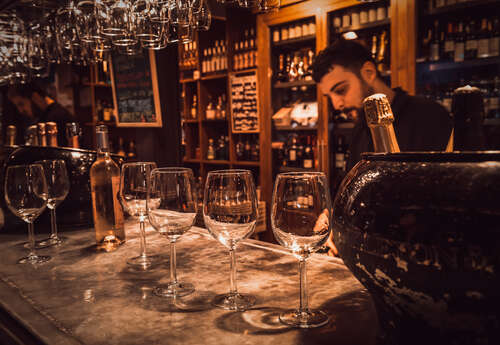
The traditional basket press is back in fashion in Burgundy. Sarah Marsh MW asks some of the region’s leading producers why they’ve reclaimed a tool once destined for winemaking museums and village floral displays.
In many respects Burgundy remains a traditional wine region, particularly in the vineyard, but it has not escaped the ebb and flow of fashion in the winery.
Recent years have seen aging in concrete eggs and amphorae, together with a resurgence of whole-bunch fermentation.
The current trend piquing my interest is the use of the basket press—a traditional vertical press which employs a wooden basket or metal cage.
The delightfully retro charm of the basket press
I confess this is partly self interest. I am intrigued by the idea of using one. Most of those who use them become passionate advocates. Their pride in this bit of kit is akin to the enthusiasm of winemakers showing their pneumatic presses a generation ago; engineered to use a bladder system, these gleaning stainless steel monsters helped to create a new wave of super fresh and fruity whites.
By contrast the basket press is delightfully retro. The ubiquitous, flower-filled wooden press pensioned off to stand at the entrance to wine villages throughout France and beyond, symbolizes the importance of tradition, a nod to the past while things have moved on in the winery.
Of course some winemakers remained steadfastly traditional and continued to use them. Yves Confuron of Domaine Confuron-Cotetidot, who produces fabulously long-aging reds from his traditional winery in Vosne-Romanée, is among them. But latterly more winemakers have cottoned on.
The benefits of the basket press
So what are the potential benefits?
Those who favor the vertical basket press consider the press wine it produces has finer tannin.
Just imagine the process. When a red wine has finished fermenting, the wine is removed to another tank, leaving behind the sloppy solids which are largely grape skins mixed with wine, but incorporates seeds and stalks, if whole bunches have been used, and quite possibly some whole un-burst berries.
It requires careful handing. The resulting press wine might be seen as a concentration of the cuvée; a distilled expression of the terroir combined with the personality of the vintage and the approach of the winemaker.
As such it has potential to enhance or diminish the quality of the final cuvée.
The wet matter is transferred into a press. In this scenario the receptacle is a basket or cage of a vertical press. This is surmounted by a giant plate which, in traditional versions, descends into the fruit pressing the matter, creating a cake.
Vertical action
It is a vertical action. The pressure is relatively gentle on the skins and it doesn’t crush the seeds or the stalks if whole bunches are used. The flow of wine goes sideways through the perforations in the basket/cage, rather than being pushed, more aggressively, straight through the solids.

While a pneumatic press uses a cycle in which a thin layer of increasingly dry solids are churned and re-pressed. Although the pressure can be set low, the extraction can be greater (or more efficient depending on your point of view) as the wine is pushed through the increasingly dry skins, the seeds, and possibly also the stalks.
When using a vertical press it may be necessary to dig out the basket or cage, tip the matter into a bin to loosen up the cake and return it for pressing, but the action is gentle and its advocates say the tannin is finer.
Avoiding the squashing and mushing
“The pressure comes down vertically,” says Australian Andrew Neilsen of Le Grappin, “So you don’t get the squashing and mushing of a pneumatic and you get more delicate tannins.
“Yes you can lose a little juice, but you don’t crush the seeds and stems (he uses plenty of whole bunch). If you take your time, you may lose only 20 liters (5.3 gallons), and maybe that was no good anyway.”
François Millet, who established a micro-négociant with his son (François et Julien Millet) in his garage in Chambolle, after 35 years as winemaker at Domaine Comte Georges de Vogüé, doesn’t move the cake at all, preferring long slow pressure over a couple of hours to achieve maximum quality of the press wine.
“I don’t like to take out the pomace,” Millet says. “You need a progressive and slow pressure to really get the advantage of the vertical press which uses natural filtration.
“The wine is as almost as clear at the end as at the start. I don’t know the bar (measure of pressure) as we only have a manual pressure indicator and the maximum pressure is limited by the basket.
“We only look to see if the pressure is very high. We work instinctively, guided by the taste and the way the juice is coming from the press.
“We taste the wine constantly and then we stop. There is no concern of having very cloudy and harsh press wine, but time is quality. We are not in a hurry. It takes two hours. If you rush, you lose the purpose of the basket press.”
At Chandon de Briailles in Savigny-Lès-Beaune, Claude de Nicolay agrees.
“The vertical press is really important for the quality of the tannins. There are no dry tannins,” de Nicolay says. “We always check the end of press and find we can always add it.
“It is always good and balanced, not dry and aggressive. I believe it’s because we have whole bunch and they do the job of the draining.
“We press manually. We don’t measure the bar. It is all done by tasting and we stop even if the berries are still wet.”
When neat and small is beautiful
In Andrew Nielsen’s tiny winery housed in the city walls surrounding Beaune there is barely room for the wooden fermentation tanks, let along the basket press, which is squeezed between them. Neat and small here is an advantage.
Previously Nielsen had a much larger, 90-year-old, piston-operated affair with a wooden basket. This was slower and too large to press small parcels.
Some winemakers are deterred by maintaining a traditional wooden basket. Nielsen worried about Brett from the wooden cage and felt the metal plunging plate gave a metal count too high for comfort, albeit well below the legal limit.
However Yves Confuron has no such concerns about the oak and François Millet remarks, “We have no issue with the wood. We know the wood. Like wooded vats you must put a fan inside and this is what we do.
“There is no rot and the structure doesn’t move. We have high pressure hose to clean it and we dry it with the fan.”

The large, the modern, and the monstrous
Of course there are modern, more technical and expensive versions, which can be programmed, are worked by the push of a button and are easy to clean.
However the metal cages, which move up and down, must be removed by forklift. Clearly not an option in a tight space, but in Nantoux on the Hautes-Côtes de Beaune, Boris Champy has plenty of room.
Such presses are not cheap, but Champy bought an ex-show model which had done the rounds of Europe. He’s making 70,000 bottles and needs a large machine.
At Domaine de L’Arlot a monster press lurks in the corner of the winery where the sorting table stands at harvest. Taking up much needed space, winemaker Geraldine Godot is keen to get rid of it, but it’s so large is proved impossible to sell.
Few traditional wineries on the Côte d’Or are sufficiently tall to accommodate it. This snazzy Italian press was purchased by her predecessor Jacques Devauges, but the instructions are in Italian and no one knows how to use it. So it’s up for sale at a bargain price to someone prepared to take it away.
White as well as red
Size matters, particularly when it comes to white. You may be surprised that the basket press is equally popular for pressing white grapes. Whole white grapes take twice as much space in the cage or basket as the skins of red grapes.
Boris Champy can press 1,300kg (1.4 tons) of white. That’s just over four barrels’ worth. The presses have two cages to ease the process.
We have come full circle from the more reductive winemaking possibilities offered by the pneumatic press where the juice can be quickly protected. Using a basket press is a more oxidative process, but these days the benefits of oxygen in the early stages of making white wine are widely recognized in Burgundy.
Advocates of the basket press argue it also produces a finer quality of juice with fewer of the particles which could cause a problem later on. This allows for little or no débourbage—the process of settling the juice in a tank after pressing, usually assisted by cooling the juice, sometimes with added enzymes, before decanting the clarified juice from the unwanted sentiment.
The only reason to do a débourbage is to clear the juice of unwanted particles. If it can be shortened or avoided it’s no bad thing—not least since the settling process can remove useful elements such as nitrogen which are needed by the yeast for a good fermentation, but also some beneficial phenolic compounds.
Boris Champy is equally enthusiastic about the quality benefits for white as for red.
“The juice of the white grapes looks clearer from the basket press than from a pneumatic, but in fact the NTU count is higher, with a turbidity of 300-400,” Champy says.
“The juice from a pneumatic press looks cloudier, but it’s larger particles from the skin. Using the basket press I don’t need to do a débourbage.”
This is echoed by Jérome Galeyrand who uses a basket press for red and white and also eschews débourbage.
The limitations of the basket press
But pressing white grapes takes a long time—six or seven hours, versus the two hours required for red. So the vertical press has its limitations.
When I worked for just a couple of days at Domaine Jean-Noel Gagnard in Chassagne Montrachet, during the generous 2017 vintage, the two pneumatic presses were in constant use into the night as the fruit kept on coming. A slow vertical press would be completely impractical.
It is possible to squeeze more white grapes into the press by crushing them gently first. Claude de Nicolay, who also uses the basket press for some of Domaine Chandon de Briailles whites, likes to do a gentle foulage first.
“The quality of the press is evident for white,” de Nicolay says.
“Such good quality, we don’t extract too much tannin from the skins. Nor do we use sulfur. The juice is perfect and the contact with oxygen is perfect.
“We leave it over one night and then transfer the juice into barrel.”
There is much more interest today in white Burgundy with light phenolic bite—structure and texture derived from grape skin rather than oak.
Controlled skin contact and oxidation of the juice resulting in more stable phenolics can make the wine more resistant to oxygen and permit it to evolve longer in bottle.
White Burgundy should have the capacity to gain complexity through bottle age. Premier cru wines from the leading Côte d’Or villages should mature beneficially over a minimum of ten years.
Light crushing before piling the grapes into the press, is part of the qualitative process. It will bring the juice into more contact with the skin, but subsequent pressing in a vertical basket press, it seems, will produce a finer juice with fewer unstable compounds and more useful ones.
Crushing by foot
Andrew Nielsen takes a robust Australian approach to foulage. With his wife Emma, he tramples the bunches of white grapes in the plastic boxes in which they arrive at the winery. First, however, he likes to refrigerate the fruit to 5°C (41°F) to preserve the esters and prevent the fermentation kicking off too quickly.
I foot-crushed my Meursault Narvaux in 2019—a relatively swift trample in the press since the machine was in demand by the winery owner.
I am heartily in favor of some foulage, however, and would certainly lightly crush whites before using a basket press, were I to get the chance.
And there may be other benefits, Boris Champy finds the pH lower and the TA higher in the white must when using a vertical press. Given a recent run of hot vintages this could be good news offering another weapon in the armory to combat climate change.
At a time when many are picking Chardonnay earlier to preserve acidity, it may help growers to wait for full phenolic ripeness.
Not for everyone, but the basket has a role
For sure we are not going to see a basket press in every winery. Some producers are not so impressed with the results.
Christophe Perrot-Minot tells me there was no discernible difference in the tannins of the same wine pressed in a pneumatic and a basket in a parallel test years ago, but he admits to buying one for the next vintage.
I think the vertical basket press will find its niche as a qualitative and practical approach to pressing small batches of grapes.
Burgundy harvests fluctuate from boom to bust with some minute recent harvests. It was not uncommon in 2019 and 2021 to have a three-, two-, or even a one-barrel cuvée.
This is set to continue and, with rocketing grape prices and high demand, the small négociant is willing to accept red grapes sufficient to make no more than a barrel or two of wine.
It is difficult to make small cuvées of red wine and few would have made a one barrel-cuvée with anything other than grand cru fruit until recently.
Arnaud Mortet, who established a small high-end négociant business in 2016 alongside the family domaine, Domaine Denis Mortet in Gevrey-Chambertin, experimented with a small basket press in 2021 which could be programmed to an adjustable “intelligent cycle.”
Arnaud was impressed with the results, finding a “calmer” quality to the press wine. He tells me he will buy two in 2022 in which to press the family’s expanded range of grands crus.
No doubt the vertical basket presses for Arnaud Mortet will be the best that money can buy, but it is still possible to purchase refurbished versions.
Sylvian Pataille rescued and revitalised several discarded presses which are perfect for his plethora of cuvées. This is where practicality, cost-efficiency and quality come together.
A tool for artisans
High- or low-tech, the basket press lends itself to an artisanal approach. Winemakers can use the small versions to focus on the minute—the chance to discover the terroir, be it the character of a specific place within a grand cru, or an exciting slice of regional land, or perhaps to hive off fruit, which is habitually blended, to discover what it brings to the party.
In small cuvées everything is exacerbated, increasing the significance of the press wine. Small snatches of terroir can be given voice. What could be more Burgundian?
François Millet has the last word. “When you’re on the highway, look behind you in the mirror,” Millet says.
“Trends can bring something very specific. The technique of using whole bunch for example. [He is not a fan].
“The basket press gives more clarity to the terroir, for you can be sure that the press wine is of very high quality.
“The press wine is very important, except when it’s not. You must always be cautious with press wine. If it’s no good you will damage the wine and the image of the land.
“But the basket press raises the quality of the press wine and with this it raises up the definition of the land.”






